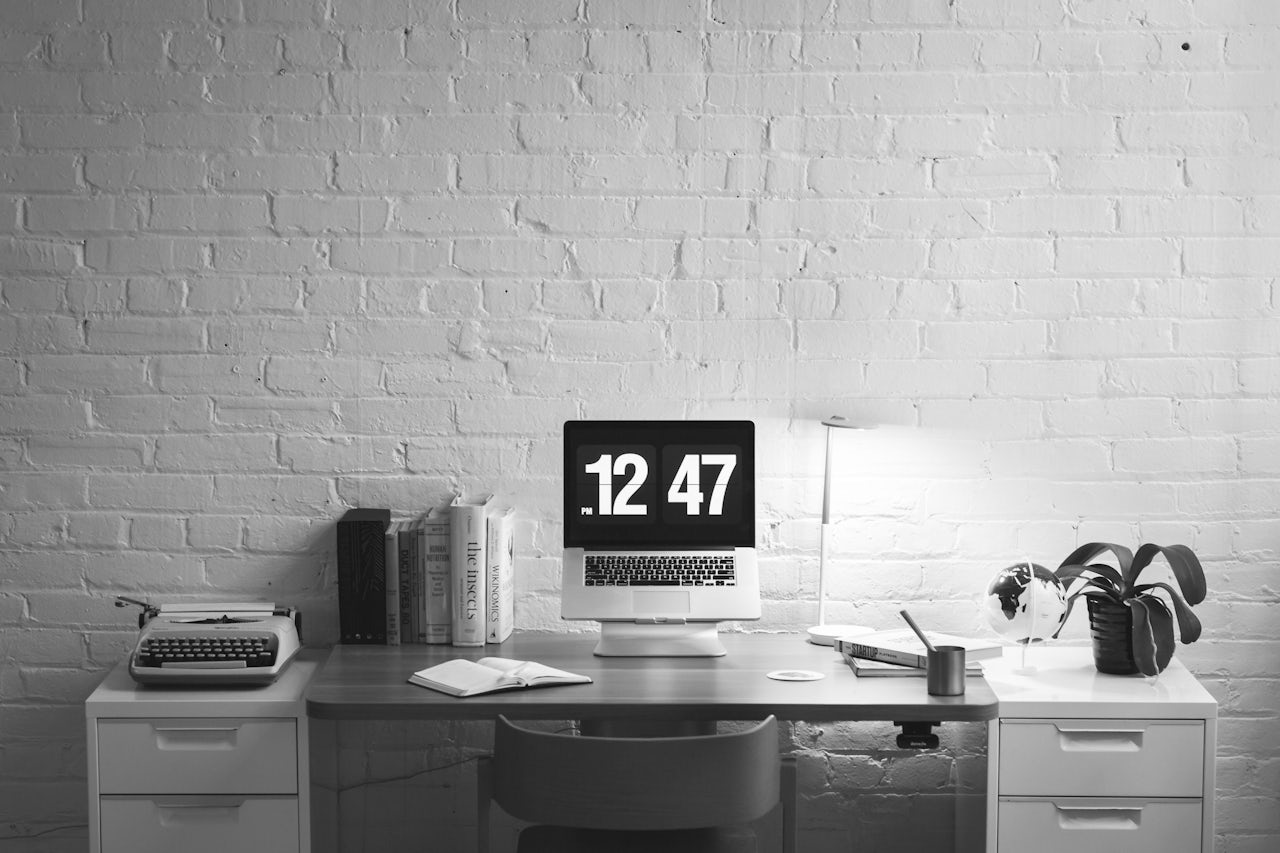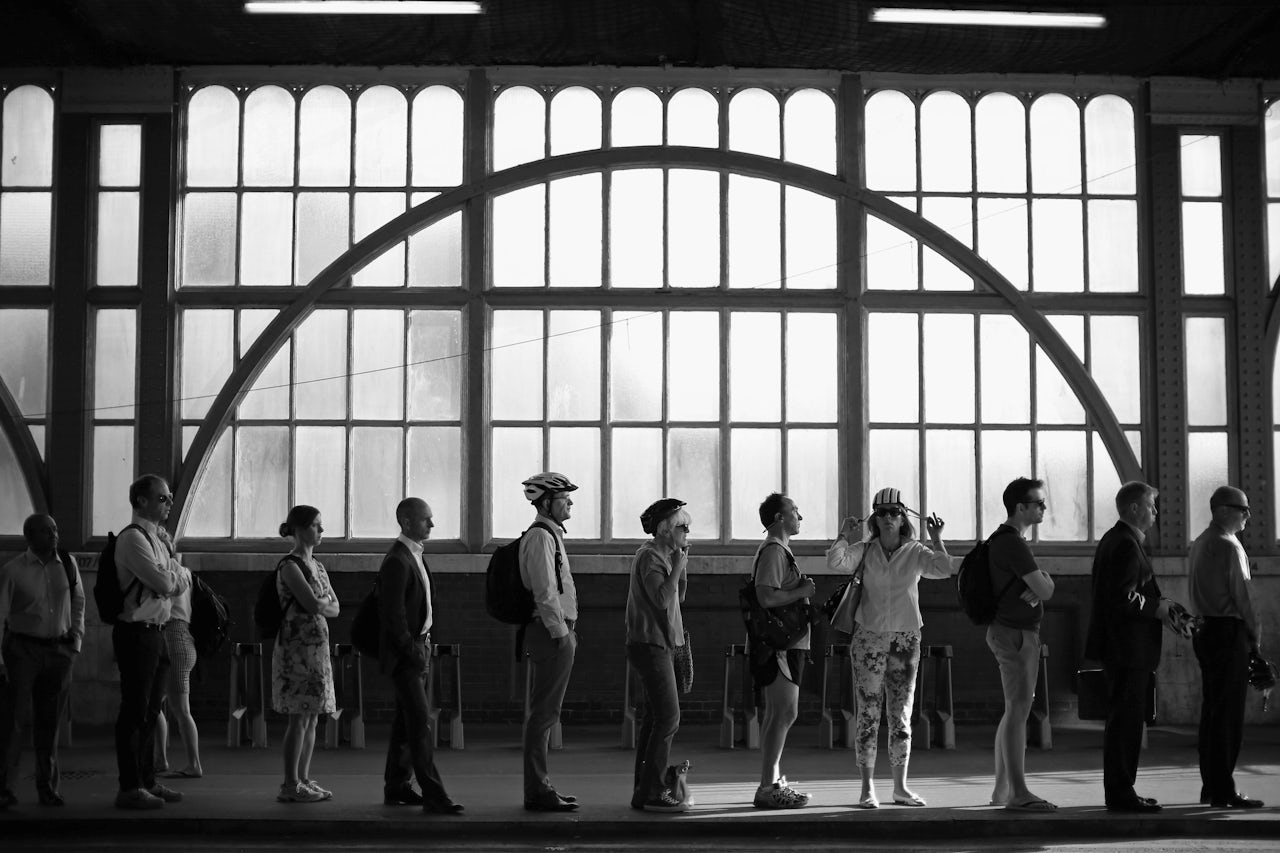It’s Monday morning, and I’m scrolling through @workspacegoals on Instagram (120k followers) in search of inspiration. This grid of interiors is striking, with desks that are each just the right kind of cluttered: saturated, bright, and inviting photos of oiled wood finishes, rare Japanese stationery, horn-rimmed glasses carefully folded on top of notebooks. Around a third of the posts feature at least a glimpse of Monstera deliciosa, the tropical plant so beloved by the creative class. If your taste veers more towards austerity, there is the no-nonsense @minimalsetups (193k followers), replete with muted greys and sleek lines — barely a cutesy accessory in sight.
Here’s what’s on my desk right now (0 followers): a banana skin from breakfast, loose papers teeming with incomprehensible scribbles, a mug deeply — and perhaps permanently — stained by coffee, and an as-yet-unused prescription. The fog of the weekend rests thickly behind my eyes. Could I really, as bloggers and social media influencers promise, feel more inspired if my desk was more like theirs? Could it be that we are both what we do and where we do it?
The ‘workspace’ — what my parents would have called a ‘home office’ — is now an integral part of any professional freelancer’s home. “We are seeing more and more homes today with workspaces being created within the hub of the home,” said Zarina Fernandez of The Workspace Stylist, whose Instagram account is followed by 95.2k people. “A workspace nook created within a kitchen, dining or living space, for example.” This integration of the office into the home is partly due to space limitations — who can spare a whole room in 2017? — but the trend also points to a blurring of the boundaries between home life and work life. It means, Fernandez told me, that we want our workspaces to be “beautifully integrated with the rest of the home, rather than just a dumping ground for stuff.”
Recent years have seen a rise in the number of freelance workers — in the U.S., 35 percent of workers are now freelancers, a figure that jumps to 47 percent for under-25s — so a concurrent cultural interest in home workspaces makes sense. No longer bound by geography, we are free-floating economic units emancipated by Dropbox, Slack, and LinkedIn. To that end, the circulation of workspace photography on social networks mirrors the circulation of our own bodies and labors. One could attribute the rise of the workspace image as merely reflecting these changes to the average working life.
Could it be that we are both what we do and where we do it?
But could they be accelerating it too? Workspace inspo is aspirational, and often accompanied by brief notes on how a stylish, organized workspace will boost well-being, motivation, and creativity. As any brand marketer will tell you, an aspirational image depicts something simultaneously out-of-reach and just attainable enough. It’s future-oriented, making use of the viewer’s imagination to create ideas about who they would like to be, not who they are right now. The ubiquitous minimalism and unified visual aesthetic of these spaces suggests creativity without ever actually being creative, self-control without ever depicting the self. The aspirational image makes us think, “I want that!”
It’s curious that any of us would want this kind of future, given the stark realities of freelancing. There is, of course, a small and elite class of ‘digital nomad’ — deliberately eschewing the 9 to 5 in favor of flexibility — whose members prosper from this work model. But for the digital mini-jobbers of Upwork, where the minimum payment is set at just $3 per hour, or Amazon Turk, where most workers make less than $5 per hour, life is less comfortable. Users have described these platforms as everything from “grueling” to “insane”.
Financial stress, combined with the social isolation freelancing demands, also has profound psychological implications. One study found that freelancers report lower well-being than employed or even unemployed peers. Another found that freelance media workers demonstrated “an elevated risk of poor subjective health.” In the US, self-employed people are less likely to have health insurance, increasing the chances of missed diagnoses in the early stages of illness. Combined with an unpredictable workload and erratic working hours, freelancing can take a serious toll.
Some people turn to freelancing because they crave autonomy and a better work-life balance (although almost two-thirds of Amazon Turk workers reportedly work every single day). Others are pushed into it through economic necessity. And of course, workspaces images aren’t to blame for this phenomenon, but these images’ unified aesthetic creates a visual bubble within our social networks that suggests freelancing is better than traditional employment, that we not only could but should be living this way.
These workspaces are those of the entrepreneurial self, the individual who has been encouraged to think of themselves as a business. When you become your own CEO, any separation of work and life is simply bad for business. It’s the same impulse that drives the fully integrated personal brand, the “always-be-closing” after-hours networking events. To be that person is appealing to buyers, who benefit from your flexibility, your branding, and willingness to aggressively undercut yourself and your peers. You become your own scab. To romanticize this, to refashion it into something desirable, seems like a cruel prank.
Workspace inspo, however, is never grim or monstrous. It’s cheery and light-filled, and its soft pastel hues tell us everything will be ok. Order can indeed prevail over chaos, these images say, so long as we artfully arrange our stationery. We can tidy our way out of poverty, framed by thick tropical leaves. But rather than beautify our miserable realities, we could also leave our desks in sweet, shambolic disarray.




